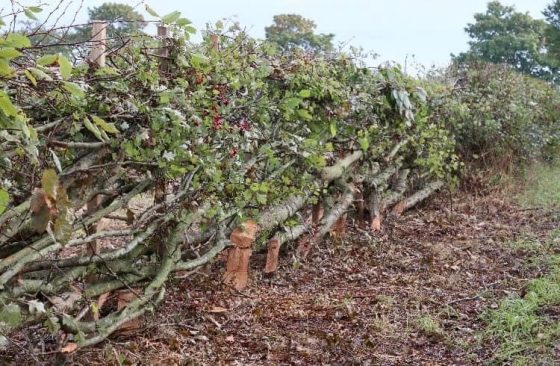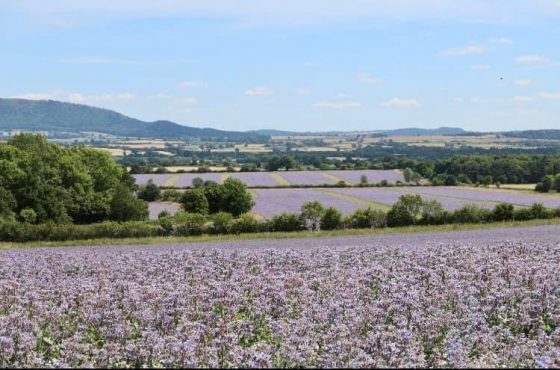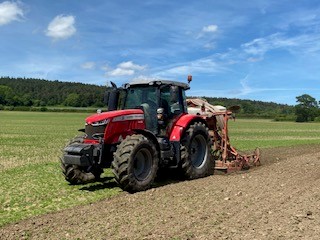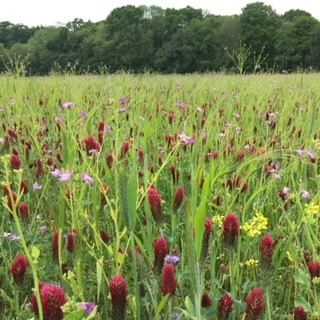Sundorne Castle Estate operates its own innovative arable enterprise, and supports a number of additional tenant farms.
It is principally an arable farm growing a combination of oilseed rape, milling wheat, malting barley, potatoes, maize and rye to assured standards.
It is at the forefront of emerging technology in employing GPS yield mapping data, soil sampling, airborne gLAI images and various practical trials to reduce the requirement for intensive land working and inputs whilst producing crops to a high standard.
The Estate employs conservation habitats along boundaries and water courses and retains undisturbed ancient woodland in an effort to protect the natural environment and biodiversity for the future.
Hedge laying
Hedgerows are the vital stitching in the patchwork of our countryside. They work as green arteries connecting habitats, bat flight paths and help different species thrive to increase biodiversity. Hedge laying is country craft that has been practised for hundreds of years, this is carried out annually on Sundorne Castle Estate. By using sympathetic management it allows blossom and berries to form, and the hedge to slowly and incrementally increase in size this keeps the hedge in a healthy condition. Eventually, though every hedge needs to be rejuvenated from the base and hedge laying is one of the best and most traditional ways of doing this. A laid hedge provides a stock proof barrier and a dense habitat for wildlife but most importantly it encourages new growth that starts a new life cycle of the hedge.
.
Borage
Borage or Starflower as it is more commonly known is a herb. It is said, that borage has a taste comparable to that of cucumber. Borage has various culinary applications and is also used in medicinal remedies for fevers and coughs. In 2022 we grew Borage for the very first time on Sundorne.

Sewing
Sewing bumble bird mix into the edges of the field.
Bumble bird is a mixture of small seeds and cereals, along with a range of pollen and nectar rich plants that are likely to entice birds, pollinators and insects alike. This is great way of bringing a diverse range of species that also has fantastic benefits to wildlife.


